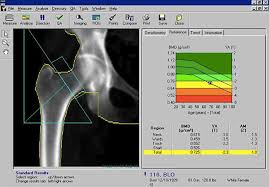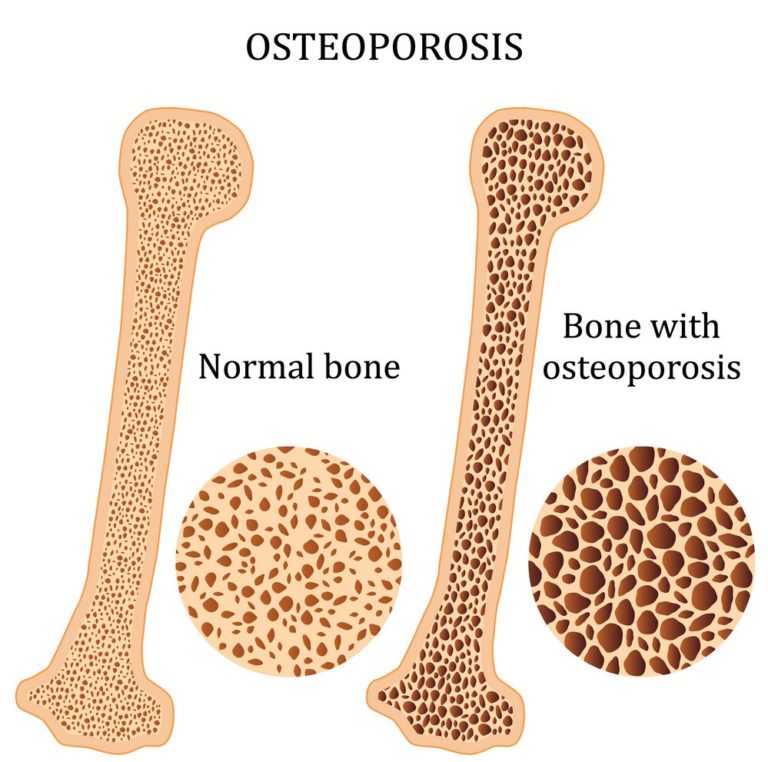Resistance training can be defined as any exercise which creates a force or muscular contraction. It also places a load onto the bones. By loading our bones through the effects of resistance training we initiate a reaction from the bone. This reaction encourages ossification, which is the body’s process of laying down new bone material. Ossification creates strong healthy bones with a high density of bone matter. Bone mineral density is a measure of how much matter is contained per square centimeter of bone.
Tests for bone density
Several tests are used to measure bone mineral density, including DEXA scans and the heel test. Heel tests are easier and less expensive, as they only require a simple ultrasound of the heel. The DEXA (Dual Energy X-ray Absorptiometry) involves more technical equipment. Bone mineral density is essential when analysing bone health. Bones with a low bone mineral density are more porous and therefore can fracture and break easily. Unhealthy and weak bones can also lead to several diseases.

Osteoporosis
Osteoporosis is a common bone disease in which bones become fragile and brittle. Sufferers of osteoporosis are therefore more susceptible to breaks and fractures from slight impacts. In Australia 1 in 2 women, and 1 in 3 men, over the age of 60, will have an osteoporotic fracture. Serious breaks such as hip fractures, can be extremely debilitating, and at times life threatening. Women are at greatest risk of developing osteoporosis, especially after menopause. Bone loss is between 1-5% per year. Other causes of osteoporosis include low levels of vitamin D, family history and lifestyle.
The good news is that osteoporosis is preventable! The risk of developing the disease can be significantly decreased by consuming a diet with adequate levels of calcium, ensuring enough vitamin D, and most importantly, by taking part in regular physical activity.
Research has indicated that resistance training, and any activity which places load through the bone, can significantly reduce the risk of osteoporosis, specifically through increasing bone mineral density.

Benefits of Resistance Training
The benefits of resistance training are applicable at all age levels. It is however, more beneficial to begin resistance training during adolescence to build up maximum bone mineral density and thereby provide the greatest protection against osteoporosis. The teenage years are when the greatest build up of bone occurs, and when bones are therefore the most responsive to training. The loss of bone mass can however be prevented at any age. Taking part in resistance training even in ones 80’s, will improve bone strength, as well as increase muscle strength, co-ordination and balance. This will all work towards preventing falls and intern, provide a greater quality of life.
Are you doing enough resistance training?
Check out some resistance training exercises: The Front Squat, The Turkish Get Up, Bench Press
Learn about resistance training exercises in Fit Education’s Cert 3 in Fitness, Cert 4 in Fitness,and Diploma of Fitness.
